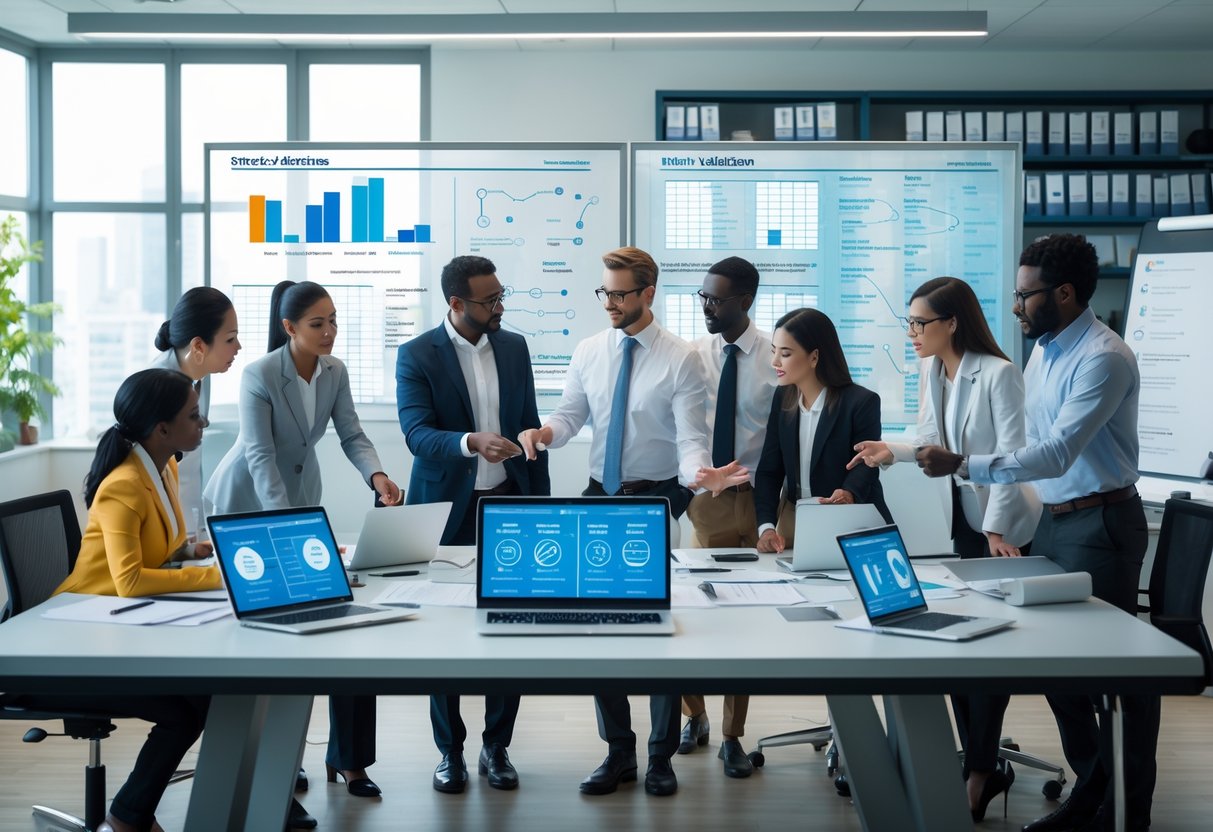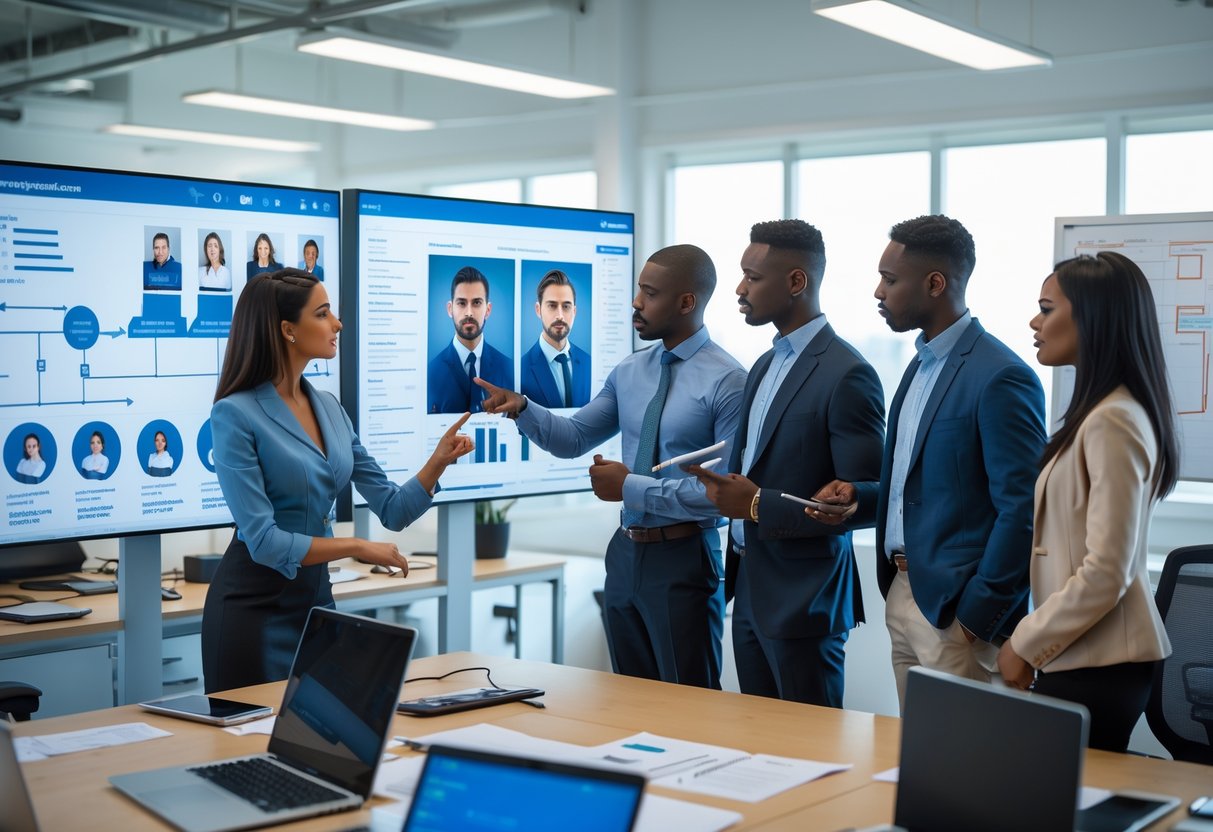When I talk about the suspect validation process, I’m really zeroing in on how we figure out if the info about a person is legit, accurate, and backed up with real evidence. The suspect validation process is how investigators check facts, go through documents, and make sure every detail lines up before calling someone a confirmed suspect.
This step keeps us from making mistakes and ensures decisions are based on solid proof, not just hunches or rumors.

I look at how evidence gets gathered, documented, and tested for reliability. Every bit of info—whether it’s from a witness, a fingerprint, or an official record—needs a careful once-over.
A clear method helps me separate facts from wild guesses. It’s the only way to keep things fair and professional.
What’s the big deal about validation? Well, it’s what keeps investigations honest. Without it, you’re building a case on shaky ground.
By sticking to validation steps, I know I’m making things more accountable. It’s a stronger base for whatever comes next.
Key Takeaways
- Validation makes sure info is accurate before calling someone a suspect.
- Every piece of evidence gets a careful review and proper documentation.
- A structured process keeps things fair and makes investigations stronger.
Core Principles of the Suspect Validation Process

I care about accuracy, fairness, and accountability when it comes to suspect validation. It’s about sticking to clear purposes, legal limits, and making sure everyone knows their job.
Purpose and Importance
I use suspect validation to make sure the evidence linking someone to a crime is real—not just a guess. This step helps me avoid mistakes that could mess up the investigation or hurt someone’s rights.
Validation also gives the case more weight in court. Judges and juries want evidence that’s been tested and confirmed, not just tossed in without a second thought.
I see validation as a safety net. It checks that tools, witness statements, and digital records meet the standards they’re supposed to.
Forensic validation, for example, makes sure software or devices actually work the way they claim to. I think it’s crucial—it keeps things efficient but fair.
Legal and Ethical Considerations
I have to follow strict legal rules when I validate a suspect. That means collecting, analyzing, and documenting evidence by the book.
If I skip steps or cut corners, the whole case could fall apart in court. Ethics matter just as much as the law.
I stay away from bias, protect privacy, and respect rights. No shortcuts, no funny business.
Professionalism and fairness are my guideposts. I keep detailed records of every validation step, so anyone can see I did things right.
By blending legal and ethical standards, I keep things fair for both the suspect and everyone else.
Roles and Responsibilities
Suspect validation isn’t a solo act. Investigators, forensic folks, and legal pros all have a role.
As an investigator, I gather and organize the details. Forensic specialists check tools and methods for accuracy. Prosecutors look over the evidence to make sure it holds up legally.
Collaboration is everything. If people don’t talk or understand their roles, the case gets wobbly.
I use established procedures—like method validation approaches—to keep everyone on the same page. That way, we’re consistent and less likely to mess up.
Initial Suspect Identification

I kick off the suspect validation process by narrowing down who might have done it. I stick to clear, reliable info—think physical descriptions, prior records, and solid timelines that can either point to or clear someone.
Criteria for Suspect Selection
When I pick potential suspects, I don’t go with gut feelings. I use witness statements, forensic evidence, and physical descriptions.
Height, build, clothes, tattoos, scars—these details help me focus in. I also pay attention to behavior.
Someone seen running from the scene or acting weird nearby? That’s worth a closer look. I stick to stuff I can actually check, not just vibes.
A structured approach keeps me from getting biased. I always compare early descriptions with actual suspects so I don’t miss any red flags.
Background Checks
Once I’ve got a list, I run background checks to see if they really fit the case. I dig into criminal history, jobs, and known associates.
Prior convictions with similar methods? That’s a clue. I also check finances, travel, and access to places or vehicles linked to the crime.
I don’t just stick to criminal databases. Payrolls, licenses, even social media—if it’s relevant, I look at it.
These checks help me figure out if someone had the means, opportunity, or motive.
TIE (Trace/Interview/Eliminate) Strategies
When there are too many suspects, I use a TIE strategy—Trace, Interview, Eliminate.
I track down people tied to the event, talk to them, and then either keep them in or rule them out based on the facts. TIE strategies help me use resources where they matter.
I group suspects by things like being at the scene, living nearby, or matching a description. Then I figure out who to look at first.
Elimination is key. DNA, fingerprints, solid alibis—these can clear someone fast. If I can’t rule them out, they stay in the mix until I have stronger evidence.
Evidence Collection and Documentation
When I’m working with evidence, I care about accuracy, consistency, and keeping things preserved. Even tiny mistakes can mess up the whole case.
Physical Evidence Gathering
Collecting physical evidence starts with spotting items that might link a suspect to the crime. Clothes, weapons, fingerprints, biological samples—I grab it all, but carefully.
I use gloves, clean tools, and sealed bags to avoid contamination. Each package gets a label with the date, time, location, and my initials.
Clear labeling saves headaches later. For fragile stuff, like glass, I use sturdy containers.
Before I move anything, I take photos and make sketches. This helps me remember where everything was and piece together what happened.
Digital Evidence Handling
Digital evidence is tricky. Devices can change data just by turning them on.
I never plug drives or phones into regular computers. Instead, I use write-blockers and forensic adapters to keep the data untouched.
I make forensic copies and only work with those. To make sure nothing’s changed, I generate hash values—digital fingerprints.
If the hash matches the original, I know I’m good. I also note down details like the device model, serial number, and its condition when I got it.
I follow digital evidence procedures so the evidence stands up in court.
Chain of Custody Management
Chain of custody is everything. I log every handoff from the moment I collect evidence till it hits the courtroom.
Each entry gets the handler’s name, time, and reason for transfer. I use standard forms and lock up evidence with restricted access.
If something leaves storage, I log when and why. This keeps tampering claims at bay.
By sticking to these methods, I protect the evidence’s integrity. Strong chain of custody, as you’ll see in evidence management guidelines, keeps it reliable and admissible.
Validation Methods and Verification Steps

I make sure every step of suspect validation is backed by solid data, real procedures, and objective standards. That means documented evidence, structured checks, and clear criteria for including or eliminating suspects.
Corroborating Evidence
I gather corroborating evidence from different, independent sources—physical records, witnesses, digital data. Each piece should match up with the others to make the case stronger.
When I check evidence, I look for matching times, places, and context. Surveillance footage should match phone records, for example.
If there’s a mismatch, I dig deeper before moving forward.
Here’s a simple comparison table I use:
| Evidence Type | Verification Method | Consistency Check |
|---|---|---|
| Witness statement | Cross-interview | Timeline match |
| Digital data | Metadata review | Location check |
| Physical object | Forensic testing | Chain of custody |
This keeps things organized and helps me see what’s real and what’s not.
Suspect Examination Protocols
I follow a protocol to keep things fair and accurate. First, I confirm identity with official docs and biometrics.
Then I check the details against what I’ve already collected. During interviews, I use standard questions and write down responses exactly as given.
I note non-verbal stuff, but I don’t treat it as hard evidence. Medical or forensic exams happen only if there’s a legal reason.
Every step gets documented, and I always keep the chain of custody clear for any samples.
Elimination and Inclusion Criteria
I use elimination and inclusion criteria to narrow down suspects. If evidence clearly rules someone out—like a verified alibi or unmatched DNA—I move on.
Inclusion needs more than one piece of solid evidence. Matching fingerprints and a witness statement together might do it, but one thing alone is rarely enough.
My checklist looks like this:
- Alibi verification
- Forensic match
- Digital trace consistency
- Witness corroboration
Doing this systematically keeps things objective and reduces guesswork.
Maintaining Integrity Throughout the Investigation
I keep evidence reliable by preventing contamination, logging every move, and doing independent checks. That’s how I make sure what I handle stands up under scrutiny.
Preventing Cross-Contamination
First thing, I separate evidence right away. Digital devices, biological samples, physical items—all go in different containers.
I use clean tools and fresh gloves for each item. For digital stuff, I rely on write-blockers to keep data unchanged.
At crime scenes, I swap gloves often and clean tools between uses. Maintaining a strong chain of custody is non-negotiable.
Every handoff gets logged with time, date, and who handled it. This way, nobody can claim evidence got tampered with.
If you want to skip all the headaches and just get reliable leads or need a consultation, honestly, why work so hard? Feel free to contact me on WhatsApp at +917303556188. It’s just easier to buy from someone who already knows the ropes—shoot me a message anytime.
Documentation Standards
I document every step I take, gathering evidence right from collection to secure storage. Each entry gets a case number, a description, and a note about the item’s condition.
I always jot down the exact method I used—whether it’s collection or analysis. For digital evidence, I mention the forensic tools and software versions.
This way, anyone can follow the trail if they need to. It just makes things way more transparent.
Standardized forms and logs? Yeah, I use them every time. They help me avoid mistakes and keep the record straight.
Without proper documentation, even solid evidence can lose its punch in court. So, it’s worth getting right.
By the way, if you ever need help with documentation or want to skip the hassle and just buy qualified leads, feel free to contact me on Whatsapp at +917303556188. Why work so hard when you can get trusted help?
Review and Oversight Procedures
Internal reviews are a regular thing for me. I want to make sure my evidence handling actually meets professional and legal standards.
Usually, a second investigator or supervisor checks my documentation. They double-check the chain of custody too.
Audits? I treat them as a routine part of the process, not some rare event. Regular quality control checks can catch problems before they mess up a case.
I make sure to validate the forensic tools I use. Independent testing tells me if the software or hardware gives reliable results.
If you want your process to run this smoothly—or just want leads that make your life easier—don’t hesitate to reach out on Whatsapp: +917303556188. It’s honestly smarter to let a pro handle it.
Challenges and Evolving Practices in Suspect Validation
I deal with both the headaches that slow down validation and the tools that make it more reliable. Organizations keep tweaking their systems, always chasing better accuracy and compliance.
Common Obstacles
Inconsistent data collection trips up a lot of teams. When info comes from all over, it gets tricky to keep things accurate.
That opens up gaps, and those gaps can really weaken your validation.
Resource allocation is another headache. Most programs just don’t have enough staff, cash, or tech.
The 2024 State of Validation report says over half of organizations blame resource shortages for falling behind.
Regulations? They keep changing. Agencies like the FDA and EMA update standards all the time.
If I don’t stay updated, compliance failures creep in. Outdated, paper-heavy methods just slow things down and boost error rates.
Emerging Technologies
Digital validation systems are taking over, honestly. Cloud platforms let me track activities in real time.
It’s a big boost for transparency and efficiency. Automated workflows also cut down on human mistakes.
Computer Software Assurance (CSA) is gaining ground. Following FDA draft guidance, more companies are using CSA for risk-based testing instead of endless paperwork.
The State of Validation report shows over 60% of organizations are moving in this direction, though not many have gone all-in yet.
Artificial intelligence and analytics help too. I use these tools to spot weird patterns in records—flagging problems before they blow up.
You can get this kind of edge without hiring a big team. Or just message me on Whatsapp at +917303556188 if you want leads or a quick consult. Why stress when you can just buy from someone who’s done the hard work?
Continuous Improvement
Validation isn’t a one-and-done thing. I treat it as a cycle—always reviewing and tweaking processes.
Tracking performance metrics helps me see if changes actually work.
Cross-functional teamwork matters too. When quality, IT, and operations share the job, validation gets more consistent.
Scaling up? As organizations grow, their systems need to keep up. Studies on process validation challenges point out the need for planning, risk checks, and scalable digital tools.
Skipping these steps just means more compliance headaches down the road.
If you’re tired of juggling all this, just reach out on Whatsapp: +917303556188. I’ve got leads and solutions ready—no need to reinvent the wheel.
Frequently Asked Questions
I focus on confirming a suspect’s link to evidence, keeping information safe, and following standards for legal investigations. Technology plays a big role in making sure everything checks out.
What are the key components involved in the validation of a suspect?
I look at the suspect’s ties to evidence, the reliability of witness statements, and how timelines line up.
Every piece gets checked against the facts for accuracy.
How is evidence authenticated during the suspect validation process?
I compare timestamps, check metadata, and review device activity logs. For digital evidence, I often use a hash value to make sure nothing’s been changed.
What role does chain of custody play in validating information related to a suspect?
I keep a clear record of who handled the evidence and when. That way, no one can claim it was tampered with.
Can you describe the procedural standards for suspect validation in a legal context?
I follow protocols that cover collection, preservation, and review steps. Courts expect proof that I stuck to recognized standards.
What methods are used to ensure the reliability of sources in suspect validation?
I cross-check witness stories with data—both physical and digital. I also check if someone had firsthand knowledge or just heard things secondhand.
If you want to skip the hassle and get high-quality leads or advice, seriously, just message me on Whatsapp at +917303556188. Why make it harder than it needs to be?
How do technological tools contribute to the accuracy of suspect validation?
I use forensic software and hardware to pull out and analyze data just as it is—no tampering. These validation tools let me check if files, messages, and device activity are actually legit.
Honestly, if you’re tired of second-guessing or just want solid, trustworthy results, why go through all the hassle yourself? Feel free to contact me on WhatsApp at +917303556188 if you need consultation or want to buy leads. It’s easier to let someone who knows the ropes handle it for you.



